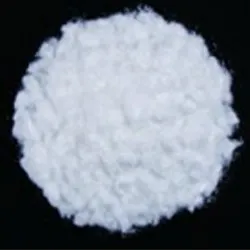
emulsifier 435
Understanding Emulsifier E435 Properties and Applications
In the world of food science and manufacturing, emulsifiers play a crucial role in stabilizing mixtures of oil and water, helping to create smooth, homogenous products. One such emulsifier is E435, also known as polyoxyethylenesorbitan monostearate. This compound, derived from sorbitol and stearic acid, has garnered significant attention due to its versatile applications across various industries, particularly in food processing and cosmetics.
Chemical Composition and Properties
E435 is classified as a non-ionic emulsifier, which means it does not carry a charge and thus exhibits unique properties compared to ionic emulsifiers. With a molecular structure that consists of fatty acid tails and a hydrophilic (water-attracting) head, E435 can effectively reduce the surface tension between oil and water, allowing them to blend more easily.
The key benefits of using E435 include its ability to enhance texture, improve mouthfeel, and increase the stability of emulsions. Its emulsifying properties are particularly significant in products that require long shelf lives, where separation of ingredients can lead to spoilage or a decline in quality. E435 is also known to have good emulsifying efficiency at low concentrations, making it cost-effective for manufacturers.
Applications in Food Industry
E435 finds extensive use in the food industry, where it is commonly added to products such as salad dressings, mayonnaise, ice cream, and baked goods. In these applications, E435 not only functions as an emulsifier but also as a stabilizer and thickening agent. For instance, in salad dressings, E435 helps maintain a uniform texture, preventing oil from separating from the vinegar or water base, thus enhancing the visual appeal and palatability of the product.
Moreover, E435 can improve the shelf life of food products by inhibiting the growth of undesirable microorganisms. Its emulsifying properties ensure that ingredients remain uniformly mixed, reducing the chances of spoilage due to ingredient separation.
emulsifier 435

Use in Cosmetics and Personal Care Products
Beyond its applications in the food industry, E435 is also widely used in cosmetics and personal care products. In lotions, creams, and shampoos, it serves as an emulsifier that helps blend oil and water components, providing a smooth and luxurious texture. The use of E435 in these products aids in the absorption of active ingredients into the skin and ensures a pleasant application experience.
The compound's ability to improve product stability is particularly beneficial in the cosmetic industry, where changes in temperature and storage conditions can affect product consistency. By incorporating E435, manufacturers can ensure their products remain effective and appealing to consumers over time.
Safety and Regulations
E435 is generally recognized as safe (GRAS) when used in food applications, but like all food additives, it is subject to regulatory oversight. In the European Union, it is classified under the food additive numbering system as E435 and has specific usage limits in various food products. Consumers, however, should always read ingredient labels and be aware of any sensitivities or allergies that may arise from emulsifiers and other additives.
Conclusion
In summary, E435 (polyoxyethylenesorbitan monostearate) is a versatile emulsifier that plays a crucial role in enhancing texture, stability, and shelf life in both food and cosmetic products. As industries continue to innovate and explore new formulations, the significance of emulsifiers like E435 will only grow, contributing to the development of high-quality products that meet consumer demands for both safety and performance. Understanding its properties and applications can help consumers make informed choices about the products they use in their daily lives.
-
Aluminum Hydroxide: Quality Gels & Dried Gel AntacidNewsAug.31,2025
-
Buy High-Quality Trichloroisocyanuric Acid for Sale | TCCA 90% SupplierNewsAug.30,2025
-
Pure Sodium Dichloroisocyanurate Dihydrate | Powerful DisinfectantNewsAug.29,2025
-
Industrial Chemicals: Quality & Purity for Every IndustryNewsAug.28,2025
-
Nitrile Rubber Honoring Strict Production StandardsNewsAug.22,2025
-
Aspartame Ingredients Honoring Food Safety ValuesNewsAug.22,2025
-
Fertilizer for Balanced Plant NutritionNewsAug.22,2025
Hebei Tenger Chemical Technology Co., Ltd. focuses on the chemical industry and is committed to the export service of chemical raw materials.
-

view more DiethanolisopropanolamineIn the ever-growing field of chemical solutions, diethanolisopropanolamine (DEIPA) stands out as a versatile and important compound. Due to its unique chemical structure and properties, DEIPA is of interest to various industries including construction, personal care, and agriculture. -

view more TriisopropanolamineTriisopropanolamine (TIPA) alkanol amine substance, is a kind of alcohol amine compound with amino and alcohol hydroxyl, and because of its molecules contains both amino and hydroxyl. -

view more Tetramethyl Thiuram DisulfideTetramethyl thiuram disulfide, also known as TMTD, is a white to light-yellow powder with a distinct sulfur-like odor. It is soluble in organic solvents such as benzene, acetone, and ethyl acetate, making it highly versatile for use in different formulations. TMTD is known for its excellent vulcanization acceleration properties, which makes it a key ingredient in the production of rubber products. Additionally, it acts as an effective fungicide and bactericide, making it valuable in agricultural applications. Its high purity and stability ensure consistent performance, making it a preferred choice for manufacturers across various industries.





